Shrewsbury School
Shrewsbury School is an English independent boarding school for pupils aged 13–18 in Shrewsbury, Shropshire.
| Shrewsbury School King Edward VI School at Shrewsbury | |
|---|---|
 | |
| Address | |
Kingsland , , SY3 7BA England | |
| Coordinates | 52.7038°N 2.7622°W |
| Information | |
| Type |
|
| Motto | Latin: Intus Si Recte Ne Labora (If Right Within, Trouble Not) |
| Religious affiliation(s) | Church of England |
| Established | 1552[1] |
| Founder | King Edward VI |
| Local authority | Shropshire Council |
| Department for Education URN | 123608 Tables |
| Chairman of Governing Body | Tim Haynes[2] |
| Headmaster | Leo Winkley |
| Staff | ca. 120 |
| Gender | Co-educational (from 2015) |
| Age | 13 to 18 |
| Enrolment | ca. 800 |
| Houses | 13 |
| Colour(s) | Royal blue and white |
| Publication | The Salopian |
| Former pupils | Old Salopians |
| School Song | Carmen Salopiense |
| Website | www.shrewsbury.org.uk |

| |
Founded in 1552 by Edward VI by Royal Charter,[1] it is one of the original seven public schools as defined by the Public Schools Act 1868, and one of the 'great' nine identified by the 1861 Clarendon Commission.[3]
It was originally a boarding school for boys; girls have been admitted into the Sixth Form since 2008 and the school has been co-educational since 2015. There are approximately 130 day pupils.[4] The present site, to which the school moved in 1882, is on the south bank of the River Severn.[1]
The school's alumni – or "Old Salopians" – include naturalists, poets, academics, politicians, authors, sportsmen, actors, and military figures.
History

Foundation and early years
Shrewsbury School was founded by charter granted by King Edward VI on 10 February, 1552.[5]
The foundation of the school followed a petition in 1542 to Henry VIII from the townspeople of Shrewsbury for a free grammar school, requesting that some portion of the estates of the town's two then recently dissolved Collegiate Churches of St Mary (established by King Edgar in the 10th century) and St Chad (established in the 1200s) in the town might be devoted to its support. These two collegiate churches would have had an educational role in the medieval town prior to their dissolution.[6]
The school began operation in three rented half-timbered buildings, which included Riggs Hall, built in 1450, and now the only remaining part of the original buildings occupied by the institution.
The early curriculum was based on Continental Calvinism, under its foundational headmaster, Thomas Ashton (appointed 1561) and boys were taught the catechism of Calvin. The school attracted large numbers of pupils from Protestant families in Shrewsbury, Shropshire and North Wales, with 266 boys on its roll at the end of 1562.[7] Early pupils lodged with local families; Sir Philip Sidney (who had a well-known correspondence with his father about his schooling[8][9][10]) lodged with George Leigh, Member of Parliament for Shrewsbury. Sidney attended the school along with his lifelong friend Fulke Greville (later Lord Brooke).[11]
Having achieved a reputation for excellence under Ashton, in 1571 the school was augmented by Queen Elizabeth I. By 1581, the school had 360 pupils and was described by William Camden in 1582 as "the best filled [school] in all England".[12]
Although Ashton had resigned from his headmastership in 1568, he returned to Shrewsbury in 1578 to help draw up the ordinances governing the school, which were in force until 1798; under them, the borough bailiffs (mayors after 1638) had the power to appoint masters, with Ashton's old St John's College, Cambridge having an academic veto.[13] Shrewsbury has retained links with the college, with the continued appointment of Johnian academics to the Governing Body, and the historic awarding of 'closed' Shrewsbury Exhibitions.[14]
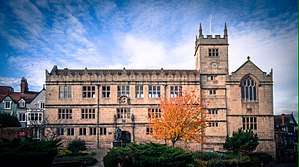
1600s
The stone buildings on Castle Gates, including a chapel, dormitories, library and classrooms were completed by 1630, with the Ashton's successor, John Meighen, founding a chained library in 1606,[15] though the library had begun making acquisitions by 1596, with a terrestrial globe by the first English globe maker Emery Molineux being its first acquisition.[16]
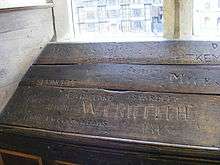
A house was also built for the school in 1617 in the nearby village of Grinshill as a retreat in times of plague.[17][18]
Civil War
Shrewsbury was occupied on behalf of the King during the Civil War. A council of war was appointed for the whole district, of which Lord Capel was president. This council held its meetings in the school library, and some of the school's books were damaged during this time.
A contentious "Royal Loan" was made to Charles I around September 1642 of £600 (around 75% of the money in the school exchequer at the time); a further £47 was lent to the corporation of the town. The loan was acknowledged under seal by the king in the following terms:
Charles Rex
Trusty and well beloved we greet you well. Whereas ye have, out of your good affection to our present service and towards the supply of our extraordinary occasions, lent unto us the sum of £600, being a stock belonging to your school founded by our royal predecessor King Edward the Sixth, in this our Town of Shrewsbury. We do hereby promise that we shall cause the same to be truly repaid unto you whensoever ye shall demand the same, and shall always remember the loan of it as a very acceptable service unto us. Given under our Signet at our Court at Shrewsbury this nth of October, 1642.
To our trusty and well beloved Richard Gibbons, late Mayor of our Town of Shrewsbury, and Thomas Chaloner, Schoolmaster of our Free School there.
This was considered a misappropriation of the school's funds. This was litigated in the Court of Chancery and before the Lords Commissioners of the Great Seal by the corporation of the town after the end of the civil war. The record of the royal loan in the school register at the time of the November audit of 1642, was torn out by the time this was before the courts. The taken funds were never recovered.[19]
1700s
The history of the school between 1664 and 1798 is not easily available, as the registers and papers between these periods have been lost for many years. Nevertheless diplomat Richard Hill, Barron Digby Governor of King's County in Ireland, Robert Price, Justice of the Court of Common Pleas, poet and politician Arthur Maynwaring, Thomas Bowers, Bishop of Chichester, attended the school at this time.[20]
In 1798, a specific Act of Parliament, The Shrewsbury School Act, was passed for the better government of the school.[21][22][23] This statutory scheme was latter amended by the Court of Chanclery, in 1853.[24]
1800s
The school had just three headmasters during the 19th century.
Samuel Butler was appointed headmaster in 1798. Writing at this time he observed: "This school was once the Eton or the Westminster of Wales and all Shropshire",[25] and under his leadership the school's reputation, which had receded from the Civil War, again grew.[26] In 1839 an incident known as the "Boiled Beef Row" took place, where the boys walked out of the school in protest at the food, and the praepostors were all removed from office.[27]
Butler was succeeded by his pupil Benjamin Hall Kennedy (of Latin Primer fame) in 1836,[26] who in turn gave way to Henry Whitehead Moss in 1866.
he school's original Castle Gates premises had little in way of provision for games. Under Dr Butler, there were two bat fives courts and playgrounds in front of and behind the buildings, but after the arrival of Dr Kennedy football was permitted, for which the school acquired a ground in Coton Hill (north of Castle Gates).[28]
Under Butler and Kennedy, Shrewsbury was one of three provincial schools among the nine studied by the Clarendon Commission of 1861–64 (the schools considered being Eton, Charterhouse, Harrow, Rugby, Westminster, and Winchester, and two day schools: St Paul's and Merchant Taylors).[30] Shrewsbury went on to be included in the Public School's Act 1868, which ultimately related only to the boarding schools. In this period (1818–1825) Charles Darwin attended the school.[31]
In 1882, Moss moved the school from its original town centre location to a new site of 150 acres (61 ha) in Kingsland (an area of land which at one time belonged to the Crown and granted to the Corporation at “a rather remote period, the exact date of which appears not to be known”, but apparently before 1180[32]), on the south bank of the River Severn overlooking the town. A legacy of this move can be seen in the school premises being referred to as "The Site".
The school continued in the 1600s buildings on its original site, until it was relocated in 1882. The school was relocated in the current Main School Building which dates from 1765 and had at different times housed a foundling hospital and the Shrewsbury workhouse, before translating to this current use. In order to meet this new purpose, it was remodelled by Sir Arthur Blomfield (whose other educational commissions include and Marlborough College and Lady Margaret Hall, Oxford). At this time, the original premises were converted to a public Free Library and Museum by the Shrewsbury Borough Council, opening in their new role in 1885;[33] over the course of the 20th century the library purpose gradually took over the whole building, to which major restoration was done in 1983.[34][28]
Blomfield also designed School House, to the east of the Main School building which was constructed during the 1880s.[35] The new Riggs Hall (which had existed from Tudor buildings at the old site[36]) was also built at this time,[37] as was Churchill's Hall[38] and Moser's Hall:[39] these buildings are the work of William White.
A gothic chapel was built for the school (also by Blomfield) in 1887, though it has been noted that "Christian religion played only a very small part in the life of the Public Schools... [and] at Shrewsbury the Governors refused to allow Butler to address the school at a service" prior to this increased focus in the Victorian period.[40] Its south and east windows in the chapel are by Kempe, employing medieval narrative style for lives of saints, scenes from the history of the school.[41]
Other buildings have since grown up around the edge of the site, with sports pitches in the centre, with diverse buildings being added to the new site over the last 130 years.
1900s
_(14769763691).jpg)
The main school building suffered a major fire in 1905.[42][43] Moss was succeeded in 1908 by Cyril Alington, then Master in College at Eton. Alington, though a Fellow of All Souls College, Oxford, was a sportsman, evidenced by the 1914 appointment as his secretary of Neville Cardus, the future cricket journalist who had joined the school in 1912 as the school's assistant cricket professional.
At the time of his appointment as Headmaster, Alington was younger than any of the masters on the staff, so to bring in new blood into the teaching staff, he recruited several former Collegers from Eton, most notably The Rev. Ronald Knox. Alington wrote the school song and commissioned its flag (a banner of arms of its coat of arms),[44] and he was an energetic builder; the school Alington Hall (assembly hall) is named after him. In December 1914 he wrote a poem, "To the School at War", which was published in The Times.[45][46] After leaving Shrewsbury, Alington went on to serve as Chaplain to the King to King George V from 1921 until 1933, and then Dean of Durham, from 1933 to 1951. He appeared on the cover of Time magazine on 29 June 1931. "An accomplished classicist, a witty writer especially of light verse, and a priest of orthodox convictions ..."[47]
During the Edwardian period Oldham's Hall was built (1911).[48] The current library building was added in 1916.[49]
Mountaineer Andrew Irvine, who, with George Mallory may have reached the summit of Mount Everest in the 1924 British Everest Expedition attended Shrewsbury during the First World War.[50] During the 1920s the Georgian villa houses at Severn Hill[51] and Ridgemount[52] were acquired by the school and adapted into boarding houses. Severn Hill, the linear decedent of the house of which Irvine was captain, holds his ice axe from the expedition, discovered in 1933 by Wyn Harris.[53]
First World War and afterwards
The First World War saw 321 former members of the school die serving their country.[54] A war memorial was added to the school in 1923 for these fallen.[55] This memorial was added to after the Second World War to include the 135 members of the school who fell in that conflict.[56] The monument contains a statue of Sir Phillip Sidney, the Elizabeth soldier, poet and courtier who himself was a former member of the school and died of wounds sustained at the Battle of Zutphen in 1597, and it faces the Main School building down an avenue of linden trees, known as 'central'.
Post Second World War
Between 1944 and 1950 John Wolfenden (later Lord Wolfenden) was headmaster; he left Shrewsbury to become Vice-Chancellor of the University of Reading. He was appointed to various public body chairmanships by the Privy Council, and also went on to be director of the British Museum. His name is closely associated with the government-instituted Wolfenden Report, which he chaired.
In 1952, the school was 400 years old. It received a royal visit to mark the occasion,[57] and presented the town with a new cross[58] for the historic site of the town's High Cross (which had been removed in 1705) at the termination of the market street which was a starting point for civic and religious processions in the medieval town and a significant location (the place of execution of Earl of Worcester and others after the Battle of Shrewsbury in 1403, and of Dafydd III, last native Prince of Wales in 1283).[59]
The future Deputy Prime Minister of the UK Michael Heseltine attended the school immediately after the Second World War on a scholarship.[60] A number of the founders and writers of the satirical magazine Private Eye attended the school in the 1950s.[61] Willy Rushton was also at the school at this time.[60] The comedian, actor, writer and television presenter Micheal Pailin of Monty Python's Flying Circus attended the school shortly afterwards and a scholarship is now available named for him.[62]
Between 1963 and 1975 Donald Wright served as headmaster. The Times has called Wright a "great reforming headmaster". While there, working with the Anglican Diocese of Liverpool, Wright took a leading role in the building of a new Shrewsbury House, the school's mission in Liverpool, which was opened in 1974 by Princess Anne. He secured many leading churchmen to come to preach in the school chapel, including Donald Coggan, Archbishop of Canterbury. After retiring as a headmaster in 1975, Wright became the Archbishop of Canterbury's Patronage Secretary, chaired the William Temple Foundation, and served as Secretary to the Crown Appointments Commission.
In the 1960s, Kingsland House, another 19th century gentleman's residence was acquired by the school and adapted for use for central catering for all pupils (previously food had been arranged in houses).[63] A new science building was also added in the 1960s.[64]
Sir Eric Anderson served as headmaster between 1975 and 1980. He went on to be Rector of Lincoln College, Oxford, chairman of the Heritage Lottery Fund and Provost of Eton, among other roles.
In 1988, another Georgian villa house, the Grove, was bought and adapted for use as boarding house.[65] In 1996 a new IT building, the Craig Building, was added.[64]
2000s
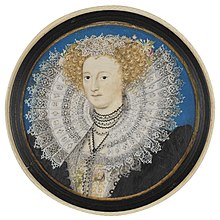
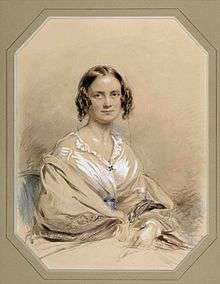
Since the turn of the millennium, the school's site has seen investment, beginning with the addition of a statue of alumnus Charles Darwin being added to the site to mark the millennial, which was unveiled by Sir David Attenborough.[66]
A new music school, The Maidment Building, was opened by HRH Prince Charles in 2001.[67]
Girls were admitted to the school for the first time into the sixth-form in 2008, and the school became fully coeducational in 2015.[68]
Two new boarding houses have been built, one named for Mary Sidney (completed 2006),[69] and one for Emma Darwin (completed 2011)[70].
Further additions to the site have been made: an indoor cricket centre (2006)[71] and a new swimming pool (2007);[72] the rowing facilities were extended with a new Yale Boat house, which was opened by Olympian Matt Langridge in 2012;[73] A new Computing and Design faculty building, "the Chatri Design Centre" was established in 2017, re-purposing and redeveloping a former humanities building;[74] and in 2015 a new building, Hodgeson Hall, was built to house the humanities departments.[75]
The addition of a new theatre was announced in 2018.[76][77]
Sports
The main sport in the Michaelmas (autumn) term is football, in the Lent term fives and rugby, and in summer cricket. Rowing takes place in all three terms. The kit of many of the sports teams shows a cross from the crown in the school's coat of arms, which is a practice that has been in place for at least 150 years. During much of the twentieth century, this cross was used solely by the school’s boatclub.
Admission of girls in 2015 has seen the introduction of field hockey, netball and lacrosse, with cricket and tennis played during the summer term.
The present school buildings in Kingsland are arranged around the sports fields which have nine grass football pitches and one of Astroturf; almost all boys play football in the Michaelmas term.[78]
Football
Football, as a formal game, was incubated at the public schools of the nineteenth century and Shrewsbury had a key role in the game's development.[79] Salopians were prominent in the early history of the organised game at Cambridge University, according to Adrian Harvey "Salopians formed a club of their own in the late 1830s/early 1840s but that was presumably absorbed by the Cambridge University Football Club that they were so influential in creating in 1846".[80] The school has an 1856 copy of the Cambridge rules of football, predating the 1863 rules of the FA.
In these early years, each of the schools had their own versions of the game, and by the 1830s the version played at Shrewsbury had become known as "douling", taking this name from the Greek word for slave: the goal had no cross bar, favoured dribbling, and was being formally supported by the school's authorities to the extent it was compulsory. While, at the beginning of the 18th century, however, the school authorities deemed football "only fit for butchers boys", an attitude common at the other public schools,[81][82] by the 1840s, all boarders were required to play Douling three times a week unless they were excused on medical grounds.[83]
From 1853, the national press was publishing reports of football at the school, although at this time matches were predominantly between the various Houses. The school's first captain of football was appointed in 1854, and a school team was formed in the early 1860s for external mataches.[84] Also by the 1860s football was sufficiently well-established for all Houses to field 1st and 2nd XI sides across all age groups.[83]
The Arthur Dunn Challenge Cup (annual football cup competition played between the Old Boys of public schools started in 1903) was contested by Shrewsbury and Charterhouse in the first ever final, and shared by the two institutions following two draws, with two Morgan-Owen brothers choosing instead to turn out for Shrewsbury, instead of playing internationally in a Wales vs. Ireland game for which they had been selected.[85] Shrewsbury has won the Arthur Dunn Challenge Cup a total of 11 times, including the Centenary Cup Final in 2003,[86] a replay of the first final in 1903.
Shrewsbury has won the Independent Schools Football Association Boodles ISFA Cup twice: in 2000 and 2010.
.jpg)
Rowing
Th Royal Shrewsbury School Boat Club (RSSBC) is one of the oldest school rowing clubs, having been founded in 1866.
Since the boat club began rowing at Henley Royal Regatta in 1912, they have won 14 times. Shrewsbury is only seconded in victories at Henley to Eton, having won specifically:
- Elsenham Cup: 1919
- Princess Elizabeth Challenge Cup: 1955,[87] 1957, 1960, 1961, 2007
- Ladies’ Challenge Plate Winner: 1932
- Special Race for Schools/Fawley Challenge Cup: 1975,1976, 1980, 1981, 1982, 1984, 1985[88]

Shrewsbury is one of only two public schools to have bumps races, the other being Eton, between the houses. They are rowed over four evenings at the end of term in July. There are usually three boats entered per house. On the fourth evening there are prizes for the leaders of the chart and the Leadbitter Cup for the boat which has made the most bumps over the four nights. The event is marshalled by senior rowers and rowing prefects, usually masters. The crew training is mainly pupil driven, though in preparation for Henley the school's First VIII rowers often do not take part, and therefore the boats are composed of other rowers and some non-rowers. Previously, races were run every day until there were no more bumps (i.e. until they were nominally in speed order). This historical set-up could lead to weeks of racing and it was therefore abandoned in favour of a four-day version more than 100 years ago. Otherwise, it is only Oxford and Cambridge that continue to have bumps. Shrewsbury and Eton both race bumps in fours whilst Oxford and Cambridge race in eights.
The town's rowing club, Pengwern Boat Club, has close historical links to the School's rowing activities, and for a time they jointly rented a boat house at the site of the current Pengwern club house.[89]
A former captain of the boat club, John Lander, is the only Olympic gold medallist to have been killed in action in World War 2.[90] GB Olympic silver medalist Rebecca Romero, and Paralympian Becca Chin both recently been appointed to coach within the club.[91]
Running

The Royal Shrewsbury School Hunt (RSSH or "the Hunt") is the oldest cross-country club in the world, with written records (the Hound Books) going back to 1831 and evidence that it was established by 1819.[92] The sport of "the Hunt" or "the Hounds", now known as a Paper Chase, was formalised at the school around 1800. Two runners (the "foxes") made a trail with paper shreds and after a set time they would be pursued by the other runners (the "hounds"). The club officers are the Huntsman and Senior and Junior Whips. The hounds start most races paired into "couples" as in real fox hunting; the winner of a race is said to "kill".[93] Certain of the races are started by the Huntsman, carrying a 200-year-old bugle and a ceremonial whip, dressed in scarlet shirt and a black velvet cap shouting:
All hounds who wish to run, run hard, run well, and may the devil take the hindmost
before lounging the bugle: and this has been done for nearly 200 years.[94]
In his 1903 semi-autobiographical novel The Way of All Flesh, Old Salopian Samuel Butler describes a school based on Shrewsbury where the main protagonist's favourite recreation is running with "the Hounds" so "a run of six or seven miles across country was no more than he was used to".[95] The first definite record of the Annual Steeplechase is in 1834, making it the oldest cross-country race of the modern era.[92]
The main inter-house cross-country races are still called the Junior and Senior Paperchase, although no paper is dropped and urban development means the historical course can no longer be followed. Every October the whole school participates in a 3.5-mile run called "The Tucks", originally intended to prevent pupils attending a local horse race.[96] It is now run at Attingham Park.[97]
The school also lays claim to the oldest track and field meeting still in existence, which originated in the Second Spring Meeting first documented in 1840. This featured a series of mock horse races including the Derby Stakes, the Hurdle Race, the Trial Stakes and a programme of throwing and jumping events, with runners being entered by "owners" and named as though they were horses.[92]
Cricket
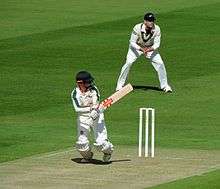
Cricket was being played at Shrewsbury at least as long ago as the 1860s.[98] A reference was made to an effort to set up a game with Westminster School in 1866 (declined by Westminster) in a House of Commons debate by Jim Prior in 1961.[99] Neville Cardus was the school's cricket professional in the early twentieth century.[100]
Boys' 1st XI season focuses on the Silk Trophy, which competed for by Shrewsbury, Eton, Oundle and an overseas touring side at the end of each summer term.[101]
The school competes in the HMC Twenty 20 having made the finals day each year since 2010, winning the competition in 2011 and 2013.[102] The school won the Lord's Taverners Trophy in 2005.[103]
Old Salopians who have played county cricket include James Taylor, Scott Ellis, Nick Pocock, The Hon. Tim Lamb, Ian Hutchinson.,[104] Ed Barnard, Steve Leach, Ed Pollock, Dion Holden,[105] Dave Lloyd,[106] George Garret,[107] George Panayi.
Eton Fives
Eton Fives is major sport within the school and it has 14 Fives courts.[108] At the end of the Lent Term the school competes in the Marsh Insurance National Schools Eton Fives Championships, which are held in rotation at Shrewsbury. Highgate and Eton.[109][110]
Minor sports
Minor sports include: shooting, fencing, basketball, golf, equestrian, badminton, swimming, hockey and squash.[111]
Houses
The School, as of Michaelmas Term 2020, has 807 pupils: 544 boys and 263 girls. There are eight boys' boarding houses, four girls' boarding houses and two for day pupils, each with its own housemaster or housemistress, tutor team and matron. Each house also has its own colours.
A single house will hold around 60 pupils, although School House and each of the dayboy houses hold slightly more. Having about 90 pupils, School House used to be divided into Doctors (black and white) and Headroom (magenta and white) for most sporting purposes, whilst being one house in other respects, but this distinction was abolished in around 2000.
There are many inter-house competitions: in football, for instance, each house competes in four different leagues (two senior, two junior) and three knock-out competitions (two senior, one junior).
The houses and their colours are:
| House | Colours | Notes | |
|---|---|---|---|
| Churchill's Hall | Dark Blue & Light Blue | Richard Hudson | Opened in 1882, listed building |
| The Grove | Cornflower Blue and White | Clare Wilson | Converted to girls' house in summer 2014 |
| Ingram's Hall | Green & White | Sam Griffiths | |
| Moser's Hall | Deep Red & Black | Jane Pattenden | Opened in 1884, listed building |
| Oldham's Hall | Chocolate Brown & White | Henry Exham | Opened in 1911, listed building |
| Port Hill | Gold & Red | Andy Barnard | Formerly merged as Dayboys Hall |
| Radbrook | Violet & White | Richard Case | |
| Ridgemount | Royal Blue & Old Gold | William Hughes | Opened in 1926, listed building |
| Rigg's Hall | Chocolate & Gold | Matthew Barrett | Opened in 1882, listed building |
| School House | Black, Magenta & White | Morgan Bird | |
| Severn Hill | Maroon & French Grey | Adam Duncan | Formerly known as Chances |
| Mary Sidney Hall | Dark Blue & Pink | Anita Wyatt | Opened in September 2008 |
| Emma Darwin Hall | Wedgwood Blue & Green | William Reynolds | Opened in September 2011 |
Coat of arms and flag
.jpg)
The Arms of the school are those of King Edward VI being The Arms of England (three lions passant) quartered with those of France (fleur-de-lys).[112]
As a banner of arms, this is also used as the school's flag.
Royal visits
The following royal visits have been made to Shrewsbury School:
- The Duchess of Kent and Princess Victoria visited the school on 1 November 1832; they were guests of Lord Liverpool at Pitchford Hall for the visit.[113]
- Princess Louise, visited the school for coffee on 19 January 1898.[114]
- The future Edward VIII, then Prince of Wales, visited in 1932 to celebrate the Jubilee of the school's move to the Kingsland site.[115]
- George V visited the town of Shrewsbury, and he laid a foundation at the school for a new library by electrical switch from the town's square.[116]
- HM The Queen and HRH The Duke of Edinburgh visited the school to celebrate its 400-year anniversary of foundation in 1952.[117]
- The Princess Royal opened the new Shrewsbury School Club, called the Shewsy, in Everton in 1974.[118]
- Princess Margaret, in 1984, while officially visiting a new library in the town, lunched at the school and had a look at the new Art school.[115]
- The Queen Mother came to Kingsland Hall during the headmastership of Donald Wright in the 1990s.[118]
- The Prince of Wales opened the new music school in 2001.[119]
Grants and prizes
The school awards a number of prizes, some of which have been running for many years, among these are:
- The Sidney Gold Medal, established 1838, The top award Shrewsbury offers, it originally came with a purse of 50 sovereigns as was awarded to the top classicist going on to Oxbridge. The Trustees commissioned Sir Edward Thomason to cut the original die and the image was based on a miniature painted by George Perfect Harding and owned by Dr Kennedy, now in the School collection. The medal was discontinued in 1855 when the stocks were exhausted, but was revived again in 1899. In 1980 the Salopian Club decided that the Medal should be open to all disciplines and not purely the Classics. Since that time the majority of recipients have excelled in the sciences.[120]
 Sir Philip Sidney, former member of the school for whom a medal is named.
Sir Philip Sidney, former member of the school for whom a medal is named. - The Arand Haggar Prize, established 1890, original known as “The Mathematics Prize”, an almost unbroken run of the annual competition paper stretches back to 1890, making it one of the longest continually run mathematics competitions in the country.[121]
- The Bentley Elocution Prize, established 1867, candidates are required recite well a poem of at least sonnet length, introduced by Thomas Bentley, whose career at the School spanned more than 50 years. Past winners include Michael Palin.[122]
- Richard Hillary Essay Prize, established 2013, molded on the single word essay formula used for admission for All Souls, Oxford[122]
- The Miles Clark Travel Award, established 1994, recipients of this award have, for instance, cycled around the world for over four years; cycled back to the UK from Siberia, cycled by tandem from the north coast of Canada to Tierra del Fuego - a number of accounts of these travels have been published.[123]
Co-curricular and Extension
Visiting speakers
Past guest speakers hosted at the school include:
- Sir Arthur Conan Doyle[124]
- AC Grayling
- Hilaire Belloc[124]
- Donald Coggan when Archbishop of Canterbury
- Lord Hague,[125]
- Lord Heseltine,[126]
- Lord Hennessy,
- Lord Hutton,
- Lord Hurd,
- Oleg Gordievsky,
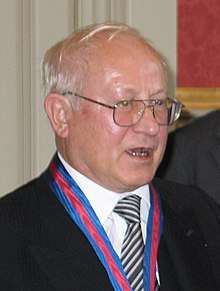 Oleg Gordievsky is one of those to have addressed the school as a speaker
Oleg Gordievsky is one of those to have addressed the school as a speaker - Sir Colin McColl,[127]
- Aidan Hartley.[128]
- Will Gompertz[129]
Societies
There are dozens of organisations known as 'societies', in many of which pupils come together to discuss a particular topic or to
listen to a lecture, presided over by a senior pupil, and often including a guest speaker, they are largely run by the students.
Those in existence at present include:
- Archery
- Art & Photography
- Bastille Society (history)
- Beekeeping[130]
- Canoe and Kayak Club
- Chinese
- Christian Forum
- Coding
- Comedy
- Cooking
- Craft and Textiles Club
- Creative Writing Society
- Darwin Society (Science)
- Debating Society
- Drama
- French
- Heseltine Society
- Junior History Society
- Maths Club
- Mindfulness
- Model Railway Society
- Model United Nations
- Paired Reading Society (students visit a local primary school, where they work with younger children on a one-to-one basis in order to help develop their reading skills).
- Pilates
- Quizzing
- Reading
- Royal Shrewsbury School Shooting Club
- Sidney Society (literature)
- Spanish Society
- STEM
- Technical Theatre
There is also a Combined Cadet Force.
Music and drama
Heritage
Under Thomas Ashton drama flourished. He made it a rule that, boys in the senior form had, every school day, to "declaim and play one Act of Comedy" before breaking from school, and the school put on frequent public Whitsuntide and mystery plays concerned with moral romance, scripture, and history. In 1565, for instance, Julian the Apostle and another unnamed performance of Ashton's were performed before a large audience, which "listened with admiration and devotion". Queen Elizabeth I, on a journey to the west midlands in 1565 intended to visit Shrewsbury to see one of these performances, but "her Majesty not having proper information mistook the time and when she came to Coventry, hearing it was over, returned to London". The Quarry park in the town had long been a place for sort and cultural activity in the old town, and this was the site of many of these play, and a bank there cut in the form of an amphitheatre was established near the rope walk. They were, according to Thomas Warton, probably the first fruits of the English theater.[131]
Contemporary Offer
Orchestras, ensembles and choirs
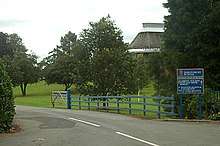
The school has the following orchestras ensembles and choirs:[132]
- The Symphony Orchestra;
- The Wind Orchestra;
- Big Band;
- The Pepys Brass Quintet (one of two brass quintets run for the best senior brass players in the school);
- The Senior Brass Ensemble
- The Senior String Ensemble
- The Chamber Choir
- The Chapel Choir
- The Community Choir (includes local members who are not part of the school)
- Jazz Band
- String quartets
- Junior and Senior string ensembles
- Clarinet and sax groups
- Year-based brass groups
- Flute Ensemble
- Tuba and horn quartets
Musicals
Every other year (and sometimes more often), Shrewsbury puts on its own homegrown school musical which is taken to the Edinburgh Festival Fringe. These have included:[133]
- Rebecca the Drowned Bride
- What You Will
- Bubble
- Jekyll!
Performances
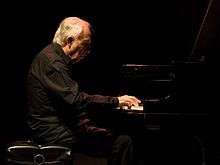
High-profile musicians and performers also visit the school with such visitors including:
Culture

Philomath and Polymath
The original buildings, and the present school library both have carved stone figures on the buildings. They represent, on the left φιλομαθης Philomathes [he who loves learning] (a character first penned by King James in philosophical dialogue known as Daemonologie) and on the right πολυμαθης Polymathes [he who has much learning]. The first figure has taken his hat off to settle to learning; the second figure is about to place his hat back on having attended to his studies.
The origianal carvings are from 1630 and are accompanied by a table which says:
MDCXXX [1630]
ΔΙΔΑΣΚΑΛΕΙΟΝ
ΕΑΝ ΗΣ ΕΣΗ
This is based on a quotation from Isocrates, "εαν ης φιλομαθης, εσει πολυμαθης", which means "If you are studious (loving learning), you will be(come) learned; Διδασκαλειον means "school".[141]
School song
The school has its own song, "Carmen Salopiense", written in 1916 by the Cyril Alington who was Headmaster at the time.[44]
Terminology
In common with other such institutions, certain idiosyncratic jargon/slang has developed at the school.[142]
Masque
To celebrate the 400 year anniversary of the school's foundation, in 1952, a masque was written which set out the history, great figures, and values of the school.
Music was by John Ranald Stainer, OBE, FRCM, FRCO, Hon RAM, and the script was written by Paul Dehn ( best known for the screenplays in Goldfinger, The Spy Who Came in from the Cold, Planet of the Apes sequels and Murder on the Orient Express).[143][144]
Praepostors
The schools' prefects are known as præpostors.[145][146][147] The word originally referred to a monastic prior and is late Latin of the Middle Ages, derived from classical Latin praepositus, "placed before".The use of praepostor in the context of a school is derived from the practice of using older boys to lead or control the younger boys. Privillages associated with the office are a particular tie showing the school's arms and the right to cycle a bike to lessons. Defining the role in 1821, Dr Butler wrote:
"A præpostor is one of the first eight boys to whom the master delegates a certain share of authority, in whom he reposes confidence, and whose business it is to keep the boys in order, to prevent all kinds of mischief and impropriety..."[148]
Awards
House and school ties and scarfs are awarded achievements in co-curricular activities.
Scholarships, exhibitions and bursary support
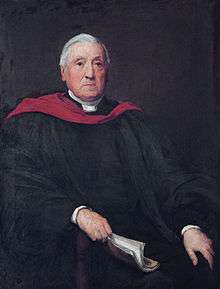
The school currently awards around £2,8M in fee remissions.[149] Various measures of financial assistance are available to students associated with need and with ability, as set out below:[150]
Academic scholarships
- Four Butler Scholarships (up to 30% of fees)
- Six Kennedy and Moss Scholarships (up to 20% of fees)
- Seven Alington Scholarships (at least £2,000 per year)
Art Scholarships
Art Scholarships are awarded annually, most of which carry a fee remission of 10%, and larger awards are sometimes made.
Music Scholarships
Music Scholarships are awarded each year, worth up to 30% of the fees and the scholars receive free music tuition on two instruments.
All-Rounder Scholarships
A small number of Sir Michael Palin All-Rounder Scholarships are awarded each year.
Ancient library
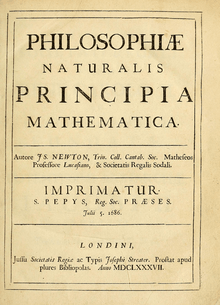
The school has an ancient library, containing various significant antiquarian books and other items.
Particular highlights of the collection include:
- Charles Darwin's school atlas, along with books, manuscripts and letters
- Newton's Principia, acquired on publication in 1687
- some forty medieval manuscripts, including a fine twelfth-century Gradual from Haughmond Abbey and the Lichfield Processional with its unique liturgical English plays of circa 1430 and polyphonic music
- a death mask of Oliver Cromwell[16]
- first edition of the King James Bible
- 1534 Tyndale Bible
Art collection
The Moser Gallery, within the library buildings, contains part of the school's collection of paintings.
This includes work by J. M. W Turner, important nineteenth century water colours, (and work by Kyffin Williams OS.[153]).[154]
Headmasters
- 2018– : Leo Winkley
- 2010–18: Mark Turner
- 2001–10: Jeremy W. R. Goulding
- 1988–2001: Ted Maidment
- 1981–88: Simon J. B. Langdale
- 1975–80: Sir Eric Anderson
- 1963–75: A. R. D. Wright
- 1950–63: John "Jock" Magnus Peterson
- 1944–50: John Wolfenden, Baron Wolfenden
- 1932–44: Henry Harrison Hardy (father of the actor Robert Hardy)
- 1917–32: Harold A. P. Sawyer
- 1908–17: Cyril Argentine Alington
- 1866–1908: Henry Whitehead Moss
- 1836–65: Benjamin Hall Kennedy
- 1798–1836: Dr Samuel Butler (afterwards Bishop of Lichfield)
- 1771–98: Revd. J. Atcherley
- 1754–70: Charles Newling
- 1735–54: Leonard Hotchkiss
- 1727–35: Robert Phillips
- 1723–27: Revd. H. Owen
- 1687–1723: Revd. R. Lloyd
- ?1646–87: Revd. A. Taylor
- 1645–62: Thomas Pigott (deprived under Act of Uniformity)
- 1637–45: Revd. Thomas Chaloner (expelled by Parliamentarians, died 1664)
- 1583–1635: John Meighen
- 1571–83: T. Lawrence
- 1561–71: Thomas Ashton
- 1552-? John Eyton [155]
- 1552-? Sir Morys [156]
Notable masters
- Nick Bevan, housemaster, rowing coach, later headmaster of Shiplake College
- Anthony Chenevix-Trench, housemaster of School House, later headmaster of Bradfield College, Eton College and Fettes College[157]
- Frank McEachran[158]
- The Reverend Monsignor Ronald Knox, English Catholic priest, theologian, author and broadcaster[159]
- David Profumo, 6th Baron Profumo, teacher and novelist[160]
- Sir William Gladstone, 7th Baronet, teacher and officer[161]
Affiliate schools
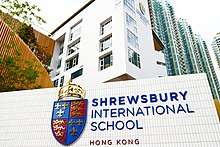
Shrewsbury has the following affiliate schools:
- Shrewsbury International School, Bangkok. Riverside located on the banks of the Chao Phraya River, opened 2003[162] with 1,736 students[163]
- Shrewsbury International School, Bangkok. City Campus, established in 2018, a feeder school for Riverside campus[163]
- Shrewsbury International School, Hong Kong, opened 2018;[164][165]
- Packwood Haugh School, is a Shropshire Preparatory School which united with Shrewsbury School in 2019.[166]
Shrewsbury is also set to open three new international schools in China by 2022, including its first overseas boarding school.[163]
Fees and admission
Pupils are admitted at the age of 13 by selective examination,[4] and for approximately ten per cent of the pupils, English is a second or additional language.[1] The fees at Shrewsbury are up to £12,980 a term for UK students and up to £13,500 a term for international students, with three terms per academic year in 2019.[167]
Old Salopians
Former pupils are referred to as Old Salopians (from the old name for Shropshire).
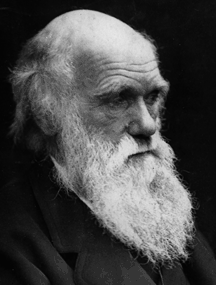

.jpg)
.jpg)
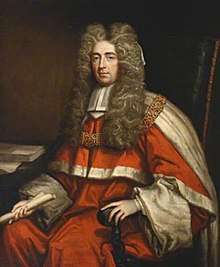
Contemporary Old Salopians
1930s
- Sir William Adams KCMG (born 1932), ambassador to Tunisia 1984–87 and Egypt 1987–92
- Peter Brown FBA (born 1935), historian of Late Antiquity and Fellow of All Souls College, Oxford
- Christopher Booker (born 1937), journalist, founder of Private Eye
- Michael Heseltine, Baron Heseltine CH PC (born 1933), politician and Deputy Prime Minister
- Brian Hutton, Baron Hutton PC QC (born 1931), Law Lord, Lord Chief Justice of Northern Ireland and Chairman of Hutton Inquiry
- Christopher Gill RD (born 1936), politician
- Richard Ingrams (born 1937), journalist, founder of Private Eye
- Sir Colin Hugh Verel McColl KCMG (born 1932), head of the Secret Intelligence Service (MI6)
- Air Marshall Sir Michael Simmons KCB AFC (born 1937), Royal Air Force Officer, Assistant Chief of the Air Staff
1940s
- Richard Barber FRSL FSA FRHistS (born 1941), historian
- Richard Best, Baron Best OBE DL FAcSS (born 1945), politician
- Piers Brendon (born 1940), writer
- Major General Sir Robert John Swan Corbett KCVO CB (born 1940), Commandant of the British Sector in Berlin 1987-90
- Sir Peter Davis (born 1941), businessman and chairman of Sainsbury's
- Edward Foljambe, 5th Earl of Liverpool (born 1944), Conservative politician and peer
- Martin Ferguson Smith OBE FSA (born 1941), scholar, writer and Classics and Ancient History professor at Durham
- Robin Hodgson, Baron Hodgson of Astley Abbotts CBE (born 1942), politician and life peer
- Stephen Jessel (born 1942), BBC correspondent
- David Lovell Burbidge CBE DL (born 1943), High sheriff of the West Midlands County 1990–91
- David Lamb, 3rd Baron Rochester (born 1944), noble
- Christopher MacLehose (born 1940), publisher
- Terry Milewski (born 1949), journalist
- Nick Owen (born 1947), TV presenter
- Sir Mark Moody-Stuart KCMG (born 1940), ex-chairman of Royal Dutch Shell and Chairman of the UN Global Compact committee
- Sir Michael Palin CBE FRGS (born 1943), actor and TV presenter
- Richard Passingham FRS (born 1943), neurologist
- Sir Nicholas Penny FBA FSA (born 1949), art historian, Director of the National Gallery
- Martin Rees, Baron Rees of Ludlow OM FRS FREng FMedSci FRAS (born 1942), Astronomer Royal, erstwhile Master of Trinity College, Cambridge, ex-President of Royal Society
- Sir Francis John Badcock Sykes, 10th Baronet (born 1942), businessman
- Thomas Townley Macan (born 1946), Governor and Commander-in-Chief of the British Virgin Islands
- Sir Roderic Victor Llewellyn, 5th Baronet (born 1947), author and partner of Princess Margaret, Countess of Snowdon
- Selby Whittingham (born 1941), art expert
- Sir James William Vernon, 5th Baronet (born 1949), landowner and accountant
- Sir Christopher Wallace KBE DL (born 1943), Lieutenant General and Royal Green Jackets
- Sir Stephen Wright KCMG (born 1946), diplomat, Under-Secretary at the Foreign and Commonwealth Office, Ambassador to Spain
1950s
- Bruce Clark (born 1958), author and International Security Editor of The Times
- Stephen Glover (born 1952), journalist & columnist
- Timothy Edward Lamb (born 1959), cricketer and sports administrator
- Sir John Auld Mactaggart, 4th Baronet (born 1951), entrepreneur and philanthropist
- Jonathan Peter Marland, Baron Marland (born 1956), Treasurer of the Conservative Party
- Sir Andrew McFarlane (born 1954), Lord Justice of Appeal in England and Wales
- Sir Philip Montgomery Campbell FRAS FInstP (born 1951), astrophysicist and editor-in-chief of Nature
- Michael Proctor FRS FIMA FRAS (born 1950), academic and Provost of King's College, Cambridge
- Nicholas Rankin (born 1950), writer and broadcaster
- Johnathan Ryle (born 1952), writer, anthropologist and professor at Bard College
- Desmond Shawe-Taylor LVO (born 1955), art historian, Surveyor of the Queen's Pictures
- Jonathon Shawe-Taylor (born 1953), Director of the Centre for Computational Statistics and Machine Learning at University College, London
- Sir John Stuttard JP FCA (born 1945), Alderman and Lord Mayor of the City of London 2006–07
1960s
- Andrew Berry (born 1963), biologist and lecturer of Organismic and Evolutionary Biology at Harvard
- Simon Baynes (born 1960), politician
- Tim Booth (born 1960), musician
- Nick Hancock (born 1962), actor and TV presenter
- Clive Carruthers Johnstone CB CBE (born 1961), Royal Navy officer and Commander of the Allied Maritime Command
- John Humphrey Arnott Pakington, 7th Baron Hampton (born 1964), landowner and photographer
- Nicholas Jarrold (born 1959), Ambassador to Croatia 2000–2004 and to Latvia 1996–1999
- Jonathan Legard (born 1961), journalist and broadcaster
- Jonathan Lord (born 1962), politician
- Twm Morys (born 1961), poet and musician.
- Mark Oakley (born 1968), Canon Chancellor of St. Paul's Cathedral and Dean of St John’s College, Cambridge
- Angus Pollock (born 1962), cricketer for Cambridge University Cricket Club
- Simon Shackleton (born 1968), DJ, musician
- Martin Wainwright MBE (born 1960), journalist and author
1970s
- Charles Robertson-Adams (born 1976), athlete
- Jonty Heaversedge (born 1971), TV doctor
- Christopher Hope FRSL (born 1972), journalist, political editor of The Daily Telegraph
- Alastair Humphreys (born 1976), adventurer and author
1980s
- Omar ‘Ali Bolkiah (born 1986), Crown Prince of the Sultanate of Brunei
- Anthony Mangnall (born 1989), MP for Totnes
- Alexander Orlando Bridgeman, Viscount Newport (born 1980), businessman and landowner
- Freddie Fisher (born 1985), actor
- Richard Goulding (born 1980) actor
- Ian Massey (born 1985), cricketer, Cambridge MCCU and Herefordshire
- Joshua Sasse (born 1987), actor
- Will Tudor (born 1987), actor
1990s
- James Taylor (born 1990), Nottinghamshire and England cricketer
- Claas Mertens (born 1992), German rower
Victoria Cross holders
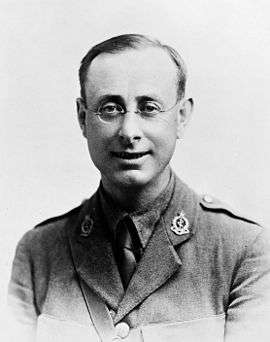
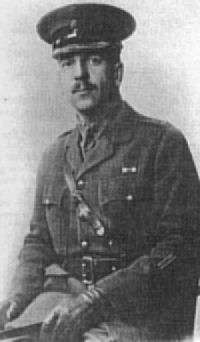
Two Old Salopians received the Victoria Cross, both in the First World War, 1914–18.
- Thomas Tannatt Pryce VC MC
- Harold Ackroyd VC MC
Old Salopain activities
The "Old Salopian Club", now known as the Salopian Club, was founded in 1886.[168] A number of reunions, clubs and activities are arranged by the club. The post nominals OS are used to denote Old Saloplians. .[169]
Sports
Former members of the school have various sporting clubs:
- Rowing is arranged by the "Sabrina Club",[170] which fields crews, including for Henley Royal Regatta[171] as well as supporting the school crews at various events
- Cricket is arranged by the "Saracens"[172]
- Old Salopian golf, yachting, fives cross country, tennis, football, squash and basketball are also provided for.[173]
Social action
Shrewsbury House
A mission in Everton, Liverpool, called "Shrewsbury House" was established in 1903.[176] It is less formally known as "the Shrewsy" and is a youth and community center associated with St Peter's Church Everton.[177] Lord Heseltine was first introduced to social issues in Liverpool which the took up in the 1980s at this mission.[178]
Medic Malawi
The charity Medic Malawi, which includes a hospital, two orphanages and The Shrewsbury School Eye Clinic has an ongoing relationships and support from the school community.[179]
Other activities
During the coronavirus pandemic of 2020 the school donated over 1,600 items of personal protective equipment to the NHS, including face shields it had 3D printed in its technology labs.[180] It also opened up rooms in its boarding houses for use for NHS staff.[181]
Steam locomotive
One of the Southern Rail, class V, Schools Class 4-4-0 locomotives designed by Maunsell and built at Eastleigh and was named "Shrewsbury". Its SR number was 921 and its BR number was 30921. It entered service in 1934 and it was withdrawn in 1962 and from use on railways and the name plaque preserved in the Admissions Offices/Registry of the school.[182]
Farm house
The school maintains a farmhouse at Talargerwyn in Snowdonia.[183][184]
This is used for outward-bound type activities and research trips.
Foundation
In 1965 the school established "The Foundation", which is one of the oldest school development offices in the country.[185]
Controversy
In September 2005, the school was one of fifty independent schools operating independent school fee-fixing, in breach of the Competition Act, 1998. All of the schools involved were ordered to abandon this practice, pay a nominal penalty of £10,000 each and to make ex-gratia payments totalling three million pounds into a trust designed to benefit pupils who attended the schools during the period in respect of which fee information had been shared.[186][187]
References
Citations
- Ofsted Social Care report 2008. Retrieved 19 March 2010
- "Governing Body Members' Details". 20 December 2012.
- "Fleming Report (1944)". www.educationengland.org.uk. Retrieved 4 May 2020.
- Independent Schools Inspectorate report 2007 Retrieved 19 March 2010
- Fisher, George William; Hill, John Spencer (1899). Annals of Shrewsbury School. University of California Libraries. London : Methuen.
- Fisher, George William; Hill, John Spencer (1899). Annals of Shrewsbury School. University of California Libraries. London : Methuen.
- Oxford Dictionary of National Biography, Volume 2. Oxford University Press. 2004. p. 684. ISBN 0-19-861352-0.Article on Thomas Ashton by Martin R. Speight.
- Vicesimus (Ed.), Vicesimus (1794). Models of letters, for the use of schools and private students. Being an epitome of the large octavo volume, entitled, Elegant epistles: and containing select letters from the best English authors, with many translated from the French, which have never appeared in any miscellaneous collection. 2. London: Printed for T. Longman, B. Law [etc.] p. 38.CS1 maint: extra text: authors list (link)
- Zouch, Thomas (1809). Memoirs of the life and writings of Sir Philip Sidne: The second edition. London: J. Mawman; T. Payne. p. 20.
- Stewart, Alan (31 October 2011). Philip Sidney : a Double Life. London. ISBN 978-1-4481-0456-7. OCLC 1100657173.
- "Fleming Report (1944)". www.educationengland.org.uk. Retrieved 6 May 2020.
- "Fleming Report (1944)". www.educationengland.org.uk. Retrieved 4 May 2020.
- Oxford Dictionary of National Biography, Volume 2. pp. 684–685.
- "Governing Body Members' Details". Shrewsbury School. 20 December 2012. Retrieved 4 May 2018.
- "School History". Shrewsbury School. 28 March 2011. Retrieved 15 April 2020.
- "The Ancient ('Taylor') Library". Shrewsbury School. 28 March 2011. Retrieved 15 April 2020.
- Nicolle, Dorothy. (2013). Shrewsbury. Stroud: History. ISBN 978-0-7524-8270-5. OCLC 841908132.
- Historic England. "STONE GRANGE, Grinshill (1055426)". National Heritage List for England. Retrieved 15 April 2020.
- Fisher, George William; Hill, John Spencer (1899). Annals of Shrewsbury School. University of California Libraries. London : Methuen.
- Fisher, George William; Hill, John Spencer (1899). Annals of Shrewsbury School. University of California Libraries. London : Methuen.
- Raby, Peter. (1991). Samuel Butler : a biography (1st ed.). Iowa City: University of Iowa Press. ISBN 0-87745-331-4. OCLC 24031298.
- Butier, Samuel II (1820). A letter to Henry Brougham on certains clauses in the education bills now before Parliament. Shrewsbury: W. Eddowes. p. 15.
- The House of Commons, Order of (1803). "Journals of the House of Commons". Journals of the House of Commons. 53: 702.
- Shrosbree, Colin. (1988). Public schools and private education : the Clarendon Commission, 1861-64, and the Public Schools acts. Manchester, UK: Manchester University Press. ISBN 0-7190-2580-X. OCLC 17807648.
- "Fleming Report (1944)". www.educationengland.org.uk. Retrieved 4 May 2020.
- Lee, Sidney (1886). . In Stephen, Leslie (ed.). Dictionary of National Biography. 8. London: Smith, Elder & Co.
- Fisher, George William; Hill, John Spencer (1899). Annals of Shrewsbury School. University of California Libraries. London : Methuen.
- Shrewsbury Library, Its History and Restoration. Shropshire Libraries. 1983. ISBN 0-903802-26-0.(Unpaginated)
- "BBC Radio 4 - In Our Time, Darwin: In Our Time, Darwin: On the Origins of Charles Darwin". BBC. Retrieved 26 April 2020.
- Stray, Christopher (2005) Histories of the Nine Clarendon Schools: v. 1 Thoemmes Continuum ISBN 1-84371-108-7, ISBN 978-1-84371-108-7.
- "A TIMELINE OF THE LIFE OF CHARLES DARWIN | Christs College Cambridge". www.christs.cam.ac.uk. Retrieved 10 June 2020.
- "Landownership". Kingsland, Shrewsbury. 16 February 2015. Retrieved 15 April 2020.
- Beryl Copsey (April 1985). Read All About It! Grand Opening of Shrewsbury's free library 100 years ago. The Shropshire Magazine. p. 18–19.
- A plaque erected by The Rotary Club of Shrewsbury, commemorating the club's 60th anniversary in 1985, reads: "Castle Gates Library erected by Edward VI in 1552, Shrewsbury School occupied this site until 1882. The stone buildings were built 1594–1630. Judge Jefferys and Charles Darwin were educated here. Re-opened as a library in 1983 after complete renovation."
- Historic England. "SHREWSBURY SCHOOL, SCHOOL HOUSE, Shrewsbury (1271348)". National Heritage List for England. Retrieved 14 April 2020.
- Historic England. "RIGGS HALL RIGGS HALL, TO REAR OF LIBRARY, Shrewsbury (1246750)". National Heritage List for England. Retrieved 15 April 2020.
- Historic England. "SHREWSBURY SCHOOL, RIGG'S HALL, Shrewsbury (1271377)". National Heritage List for England. Retrieved 15 April 2020.
- Historic England. "SHREWSBURY SCHOOL, CHURCHILL'S HALL, Shrewsbury (1271343)". National Heritage List for England. Retrieved 15 April 2020.
- Historic England. "SHREWSBURY SCHOOL, MOSER'S HALL, Shrewsbury (1246401)". National Heritage List for England. Retrieved 15 April 2020.
- "Fleming Report (1944)". www.educationengland.org.uk. Retrieved 6 May 2020.
- Historic England. "SHREWSBURY SCHOOL CHAPEL, Shrewsbury (1271376)". National Heritage List for England. Retrieved 14 April 2020.
- "The Workhouse in Shrewsbury, Shropshire (Salop)". www.workhouses.org.uk. Retrieved 26 April 2020.
- "Shrewsbury School, Shropshire - schoolheritage.co.uk". www.schoolheritage.co.uk. Retrieved 26 April 2020.
- "School song". Shrewsbury School. 28 March 2011. Retrieved 16 April 2020.
- Noakes, Vivien, ed. (2006). Voices of silence: the alternative book of First World War poetry. Stroud, Gloucestershire: Sutton Pub. ISBN 978-0-7509-4521-9. OCLC 71239052.
- "To the School at War". Shrewsbury School. 4 September 2014. Retrieved 16 April 2020.
- Pfaff, R. W. (1980). Montague Rhodes James. London: Scolar Press. p. 260.
- Historic England. "SHREWSBURY SCHOOL, OLDHAM'S HALL, Shrewsbury (1246451)". National Heritage List for England. Retrieved 14 April 2020.
- "Library". Shrewsbury School. 28 March 2011. Retrieved 14 April 2020.
- "Midlanders who tackled Mount Everest". ITV News. Retrieved 16 April 2020.
- Historic England. "SEVERN HILL, Shrewsbury (1270651)". National Heritage List for England. Retrieved 15 April 2020.
- Historic England. "RIDGEMOUNT, Shrewsbury (1254704)". National Heritage List for England. Retrieved 15 April 2020.
- "Shropshire Everest victim's story to be told in new film". www.shropshirestar.com. Retrieved 16 April 2020.
- ""The School will not forget" - Old Salopians in WW1". Shrewsbury School. 26 August 2014. Retrieved 14 April 2020.
- Historic England. "WAR MEMORIAL AT SHREWSBURY SCHOOL, Shrewsbury (1246402)". National Heritage List for England. Retrieved 14 April 2020.
- "Sir Philip Sidney Statue - Old Salopians - WW1 and WW2". Imperial War Museums. Retrieved 26 April 2020.
- "Queen Elizabeth II and the Duke of Edinburgh are greeted by cheers..." Getty Images. Retrieved 26 April 2020.
- "[New Mayor of Shrewsbury recieves [sic] a cross from Shrewsbury School on behalf of the town]". search.digido.org.uk. Retrieved 26 April 2020.
- "Shropshire's History Advanced Search | Shropshire's History Advanced Search". Retrieved 15 April 2020.
- "Famous Salopians - Part Two". www.shropshirestar.com. Retrieved 16 April 2020.
- Neal, Toby. "Private Eye founder and former Shrewsbury School pupil Christopher Booker dies at 81". www.shropshirestar.com. Retrieved 15 April 2020.
- "Michael Palin scholarship launched by Shrewsbury School". www.shropshirestar.com. Retrieved 16 April 2020.
- Stuff, Good. "Kingsland House, Shrewsbury, Shropshire". britishlistedbuildings.co.uk. Retrieved 15 April 2020.
- "I.T. - Then and Now". Shrewsbury School. 29 March 2011. Retrieved 10 June 2020.
- "30 Years of the Grove". Shrewsbury School. 22 June 2018. Retrieved 15 April 2020.
- "Shrewsbury - Charles Darwin". statues.vanderkrogt.net. Retrieved 15 April 2020.
- "Shrewsbury School". TES. Retrieved 21 April 2011.
- "Girls given go-ahead to join Shrewsbury School". www.shropshirestar.com. Retrieved 26 March 2020.
- "Shrewsbury School Boarding House - Mary Sidney Hall". www.bhn.co.uk. Retrieved 15 April 2020.
- "Emma Darwin Hall (girls)". Shrewsbury School. 28 March 2011. Retrieved 11 July 2020.
- "GMR Cricket Centre". Shrewsbury School. 28 July 2017. Retrieved 15 April 2020.
- "Swimming Pool". Shrewsbury School. 28 July 2017. Retrieved 15 April 2020.
- "Langridge launches Shrewsbury boathouse". British Rowing. 10 October 2012. Retrieved 15 April 2020.
- "Shrewsbury School - Chatri Design Centre". www.bhn.co.uk. Retrieved 19 April 2020.
- "Hodgson Hall: Shrewsbury School - Education Project - Adrian James Architects Oxford". Retrieved 15 April 2020.
- Reynolds, Jordan. "New plans for school theatre". www.shropshirestar.com. Retrieved 16 April 2020.
- "Shropshire firm lands £2.3m refurbishment for Shrewsbury School | Business Leader News". Business Leader. 11 June 2019. Retrieved 19 April 2020.
- "Football". Shrewsbury School. 2011.
- "We played by our own set of rules". www.shropshirestar.com. Retrieved 26 April 2020.
- Harvey, Adrian (2005). Football: The first hundred years. Routledge. p. 251.
- Shephard, Roy J. (18 September 2017). A history of health & fitness : implications for policy today. Cham, Switzerland. ISBN 978-3-319-65097-5. OCLC 1005231187.
- "Fleming Report (1944)". www.educationengland.org.uk. Retrieved 4 May 2020.
- "Old School Ties Part 4 - Centre Circle Publishing". Exposure. Retrieved 26 April 2020.
- "Shrewsbury School part two: Douling, football's slavery". Football Bloody Hell. 23 February 2019. Retrieved 26 April 2020.
- "Timothy Morgan Owen (1843–1924) 13". owen.cholerton.org. Retrieved 26 April 2020.
- https://www.telegraph.co.uk/sport/2399224/Arthur-Dunn-Cup-Centenary-Final-Chester-hits-clincher.html
- "Shrewsbury School, left, winning the Princess Elizabeth Challenge Cup..." Getty Images. Retrieved 26 April 2020.
- "Henley". Shrewsbury School. 28 March 2011. Retrieved 13 April 2020.
- Wigglesworth, Neil. A social history of English rowing. London. ISBN 978-1-315-03558-1. OCLC 1082243099.
- "JGH Lander (OS) Olympic and WW2 medals presented to Royal Shrewsbury School Boat Club". Shrewsbury School. 10 October 2019. Retrieved 26 April 2020.
- "Two former GB athletes and World Championship medallists join RSSBC coaching team". Shrewsbury School. 4 October 2019. Retrieved 26 April 2020.
- Robinson, Roger (December 1998). "On the Scent of History". Running Times: 28.
- "History of The Tucks". Shrewsbury School. 2011.
- Rowden, Nathan. "The birth of cross-country: Shrewsbury School's historic role in sport". www.shropshirestar.com. Retrieved 27 April 2020.
- Butler, Samuel (1903). "39". The Way of All Flesh. Project Gutenberg.
- "The Tucks". Shrewsbury School. 2011.
- "An exciting new chapter in the history of The Tucks". Shrewsbury School. 5 October 2018. Retrieved 27 April 2020.
- Neal, Toby. "Did photographer call out Shrewsbury School cricketer with dirty pads?". www.shropshirestar.com. Retrieved 18 April 2020.
- "PUBLIC SCHOOLS (ENTRY) (Hansard, 16 June 1961)". api.parliament.uk. Retrieved 19 April 2020.
- "Neville Cardus | Authors | Faber & Faber". www.faber.co.uk. Retrieved 26 April 2020.
- "Cricket". Shrewsbury School. 28 March 2011. Retrieved 26 April 2020.
- "National Schools Twenty20 competition – Schools Cricket Online". Retrieved 26 April 2020.
- "Shrewsbury School win Daily Telegraph Under-15 20/20 Schools Competition". 24 September 2009. ISSN 0307-1235. Retrieved 26 April 2020.
- "Shrewsbury School – Schools Cricket Online". Retrieved 26 April 2020.
- https://www.espncricinfo.com/england/content/player/419704.html
- https://www.glamorgancricket.com/squad-profile/david-lloyd
- https://www.espncricinfo.com/england/content/player/1145108.html
- "Fives". Shrewsbury School. 28 March 2011. Retrieved 18 April 2020.
- "Fives | Eton College". www.etoncollege.com. Retrieved 26 April 2020.
- "Minor Sports - Charterhouse". www.charterhouse.org.uk. Retrieved 26 April 2020.
- "Other (Participation) Sports". Shrewsbury School. 8 November 2013. Retrieved 16 April 2020.
- "Shrewsbury School coat of arms", The Victorian Web.
- Fisher, George William; Hill, John Spencer (1899). Annals of Shrewsbury School. University of California Libraries. London : Methuen.
- "PRINCESS- LOUISE AT SHREWSBURY. '-|1898-01-20|Evening Express - Welsh Newspapers". newspapers.library.wales. Retrieved 26 March 2020.
- "20th Century Royal Visitors to Shrewsbury". volunteeringshropshiresheritage. 15 November 2013. Retrieved 26 March 2020.
- "Watch The King's Visit to the Royal Agricultural Show, Shrewsbury". BFI Player. Retrieved 26 March 2020.
- "Video of the Visit of HM The Queen in 1952". British Movietone.
- "The Queen's visit to Shrewsbury in 1952". Shrewsbury School. 9 May 2012. Retrieved 26 March 2020.
- Andrews, Mark. "Charles at 70: We remember prince's visits to Shropshire and Mid Wales". www.shropshirestar.com. Retrieved 26 March 2020.
- "The Sidney Gold Medal - Shrewsbury's top academic prize". Shrewsbury School. 15 October 2012. Retrieved 16 April 2020.
- "The Arnold Hagger Mathematics Prize". Shrewsbury School. 29 March 2019. Retrieved 16 April 2020.
- "Bentley Elocution Prizes". Shrewsbury School. 18 April 2013. Retrieved 16 April 2020.
- "The Miles Clark Travel Scholarship Fund". Shrewsbury School. 24 April 2012. Retrieved 17 April 2020.
- Nicolle, Dorothy. Shrewsbury in the Great War. Barnsley. ISBN 978-1-78383-113-5. OCLC 890938683.
- "Lord Hague's 'Reasons to be Optimistic'". Shrewsbury School. 14 February 2020. Retrieved 16 April 2020.
- "eNewsletter: Friday 2nd February 2018". Shrewsbury School. 1 February 2018. Retrieved 16 April 2020.
- "School House knights return to inspire the next generation of spies and doctors". Shrewsbury School. 28 January 2015. Retrieved 28 May 2020.
- "Bastille Society Lectures". Shrewsbury School. 11 March 2020. Retrieved 16 April 2020.
- "'What are you looking at?' - BBC Arts Correspondent Will Gompertz presents an overview of modern art (Science Lecture Theatre)". Shrewsbury School. 29 March 2019. Retrieved 28 April 2020.
- Sharon Gamson Danks. (2010). Asphalt to Ecosystems: Design Ideas for Schoolyard Transformation. New Village Press. ISBN 9781613320792. OCLC 1027611636.
- "Nigel Hinton Nigel`s Notes on Shrewsbury Mystery Plays". www.nigelhinton.co.uk. Retrieved 11 August 2020.
- "Ensembles and Choirs". Shrewsbury School. 9 May 2011. Retrieved 16 April 2020.
- "Edinburgh Festival: The 2010 School Musical 'What You Will' 15th-20th August". Shrewsbury School. 28 April 2011. Retrieved 16 April 2020.
- "Shrewsbury, UK". The Swingles. Retrieved 28 April 2020.
- "Brahms, Bruckner and Russian Treasures galore | Nigel's Blog". Tenebrae Choir. 12 October 2015. Retrieved 28 April 2020.
- "Acclaimed international jazz musician Joe Stilgoe to perform at Shrewsbury School | Love Shrewsbury". www.loveshrewsbury.com. Retrieved 28 April 2020.
- "Maidment Auditorium, Shrewsbury School Events & Tickets 2020". Ents24. Retrieved 28 April 2020.
- "Roderick Williams, Susie Allan and Jenny Agutter in concert". Shropshire Live. 21 January 2016. Retrieved 28 April 2020.
- "Shrewsbury School's Music & Arts Programme 2011-2012". Shrewsbury School. 18 May 2011. Retrieved 28 April 2020.
- "Music & Arts Events". Shrewsbury School. 9 August 2017. Retrieved 16 April 2020.
- "Shrewsbury - Philomath and Polymath". statues.vanderkrogt.net. Retrieved 16 July 2020.
- "Salopian Terminology". Shrewsbury School. 4 October 2017. Retrieved 16 July 2020.
- "Retired director of music dies, age 98". www.shropshirestar.com. Retrieved 11 August 2020.
- Shrewsbury School (2017). "The Solopian:A GLIMPSE AT TIMES PAST SALOPIAN AND SABRINA MEMORIES OF THE 1950s" (PDF). Shrewsbury School. Retrieved 11 08 2020. Check date values in:
|access-date=(help) - Partridge, Eric, 1894-1979. (1984). A dictionary of slang and unconventional English : colloquialisms and catch phrases, fossilised jokes and puns, general nicknames, vulgarisms, and such Americanisms as have been naturalised. Beale, Paul. (8th ed.). London: Routledge & Kegan Paul. ISBN 0-7100-9820-0. OCLC 12662772.CS1 maint: multiple names: authors list (link)
- "Images of happy and carefree faces, unaware of dangers and horror ahead". www.shropshirestar.com. Retrieved 26 April 2020.
- HICKMAN-ROBERTSON, PATRICK. (2019). ADVENTURES IN A BACKWATER GOVERNMENT DEPARTMENT : and other scenes from the unremarkable life of... a son of the suburbs. [S.l.]: MATADOR. ISBN 978-1-83859-167-0. OCLC 1105242332.
- "Fleming Report (1944)". www.educationengland.org.uk. Retrieved 6 May 2020.
- Shrewsbury School Governors (31 July 2017). "ANNUAL REPORT [to the Charity Commissioners] OF SHREWSBURY SCHOOL GOVERNORS For the year ended 31 July 2017" (PDF). Charity Commission.
- "Third Form (Year 9) Scholarships". Shrewsbury School. 24 July 2017. Retrieved 26 April 2020.
- "Sixth Form (Year 12) Scholarships". Shrewsbury School. 24 July 2017. Retrieved 26 April 2020.
- "Bursaries". Shrewsbury School. 29 March 2011. Retrieved 26 April 2020.
- "BBC Radio 4 - Great Lives, Series 19, Sir Kyffin Williams". BBC. Retrieved 26 April 2020.
- "The Moser Gallery at Shrewsbury School". Watercolour World. 4 April 2019. Retrieved 15 April 2020.
- Fisher, George William; Hill, John Spencer (1899). Annals of Shrewsbury School. University of California Libraries. London : Methuen.
- Fisher, George William; Hill, John Spencer (1899). Annals of Shrewsbury School. University of California Libraries. London : Methuen.
- Foot, Paul (5 September 1996). "Paul Foot · Diary: The Buttocks Problem · LRB 5 September 1996". London Review of Books. Retrieved 26 April 2020.
- 'Frank McEachran', obituary in Books and Bookmen, vol. 20 (Hanson Books, 1975), pp. 58–59.
- "RKnox". www.kibworth.org. Retrieved 26 April 2020.
- "David Profumo: Writings, and a List of Books by Author David Profumo". www.paperbackswap.com. Retrieved 26 April 2020.
- "Sir William Gladstone obituary". ISSN 0140-0460. Retrieved 26 April 2020.
- "Shrewsbury International School Bangkok (Riverside) Review". whichschooladvisor.com. Retrieved 14 April 2020.
- "School spotlight: Shrewsbury School International". Independent Education Today. Retrieved 26 April 2020.
- "Shrewsbury Hong Kong". Shrewsbury School. 1 August 2017. Retrieved 14 April 2020.
- "British Primary School | Shrewsbury International School Hong Kong". www.shrewsbury.edu.hk. Retrieved 14 April 2020.
- Robertson, Dominic. "Merger will see Shropshire school family grow". www.shropshirestar.com. Retrieved 14 April 2020.
- "Fees". Shrewsbury School. 29 March 2011.
- "Old Salopian Club, founded 1886 year-book, thirty-third issue; April 1921". Imperial War Museums. Retrieved 19 April 2020.
- "The Salopian Club has been furloughed until further notice". Shrewsbury School. 14 March 2011. Retrieved 19 April 2020.
- "OS Rowing - Sabrina". Shrewsbury School. 28 March 2011. Retrieved 19 April 2020.
- "Henley Royal Regatta List of 2019 entries | Henley Royal Regatta". www.hrr.co.uk. Retrieved 19 April 2020.
- "OS Cricket - Saracens". Shrewsbury School. 20 May 2011. Retrieved 19 April 2020.
- "OS Sport". Shrewsbury School. 18 May 2011. Retrieved 19 April 2020.
- "OS Arts and Activities". Shrewsbury School. 18 May 2011. Retrieved 19 April 2020.
- "OS Careers". Shrewsbury School. 2 October 2012. Retrieved 19 April 2020.
- "Shrewsbury House | History". Retrieved 26 April 2020.
- "Shrewsbury House - 'The Shewsy'". Shrewsbury School. 28 March 2011. Retrieved 26 April 2020.
- HUGHES, SIMON. (2020). THERE SHE GOES : liverpool, a city on its own. the long decade. [S.l.]: DECOUBERTIN BOOKS. ISBN 978-1-9162784-4-8. OCLC 1135292206.
- "Shrewsbury House | Medic Malawi 2016". Retrieved 26 April 2020.
- Humphreys, Nick. "Shrewsbury School donates PPE in Covid-19 fight". www.shropshirestar.com. Retrieved 16 April 2020.
- "2,500+ boarding beds offered in the fight against coronavirus". www.boarding.org.uk. Retrieved 16 April 2020.
- "SR, V 'Schools' Class, 4-4-0, 921 'Shrewsbury' - Era 3". www.hornby.com. Retrieved 26 April 2020.
- "Talargerwyn". Shrewsbury School. 28 March 2011. Retrieved 26 April 2020.
- Commission for Social Care Inspection, Inspection Report, 2004
- "Shrewsbury School Foundation". Shrewsbury School. 25 June 2015. Retrieved 18 May 2020.
- Halpin, Halpin. "Independent schools face huge fines over cartel to fix fees". ISSN 0140-0460. Retrieved 29 February 2020.
- "Office of Fair Trading Press Release". National Ara chive. 21 December 2006. Retrieved 29 February 2020.
General sources
- Carr, A. M., and T. Fullman (1983). Shrewsbury Library: Its History and Restoration. Shropshire Libraries.
- Stewart, Alan (2000). Philip Sidney: A Double Life. Chatto and Windus. ISBN 0-7011-6859-5.
Further reading
- Blakeway, John Brickdale & Alfred Rimmer (1889). History of Shrewsbury School, 1551–1888.
- Bloomfield, R. (2005), History of Rowing at Shrewsbury School
- Charlesworth, M. L. (1994). Behind the Headlines. Somerset: Greenbank Press. ISBN 0952369915.
- Draisey, M. (2014). Thirty Years On! A Private View of Public Schools. Halsgrove. ISBN 978-0857042118.
- Fanning, Peter (2015). The Divided Self: Senior Moments at Shrewsbury School 1981–2012 . Somerset: Greenbank Press. ISBN 0952369990.
- Fisher, George William, and John Spencer Hill (1899). Annals of Shrewsbury School.
- Gee, D. (2015). City on a Hill: A Portrait of Shrewsbury School. Somerset: Greenbank Press. ISBN 9780952369981.
- McEachran, F. (1991), A Cauldron of Spells Jan. 1992 Somerset: Greenbank Press. ISBN 0955398606.
- Oldham, J. B. (1952). The History of Shrewsbury School.
- UK Parliament. Clarendon Report (London: HM Stationery Office 1864).
External links
| Wikimedia Commons has media related to Shrewsbury School. |
- Official website
- Text of the Public Schools Act 1868, Education in England